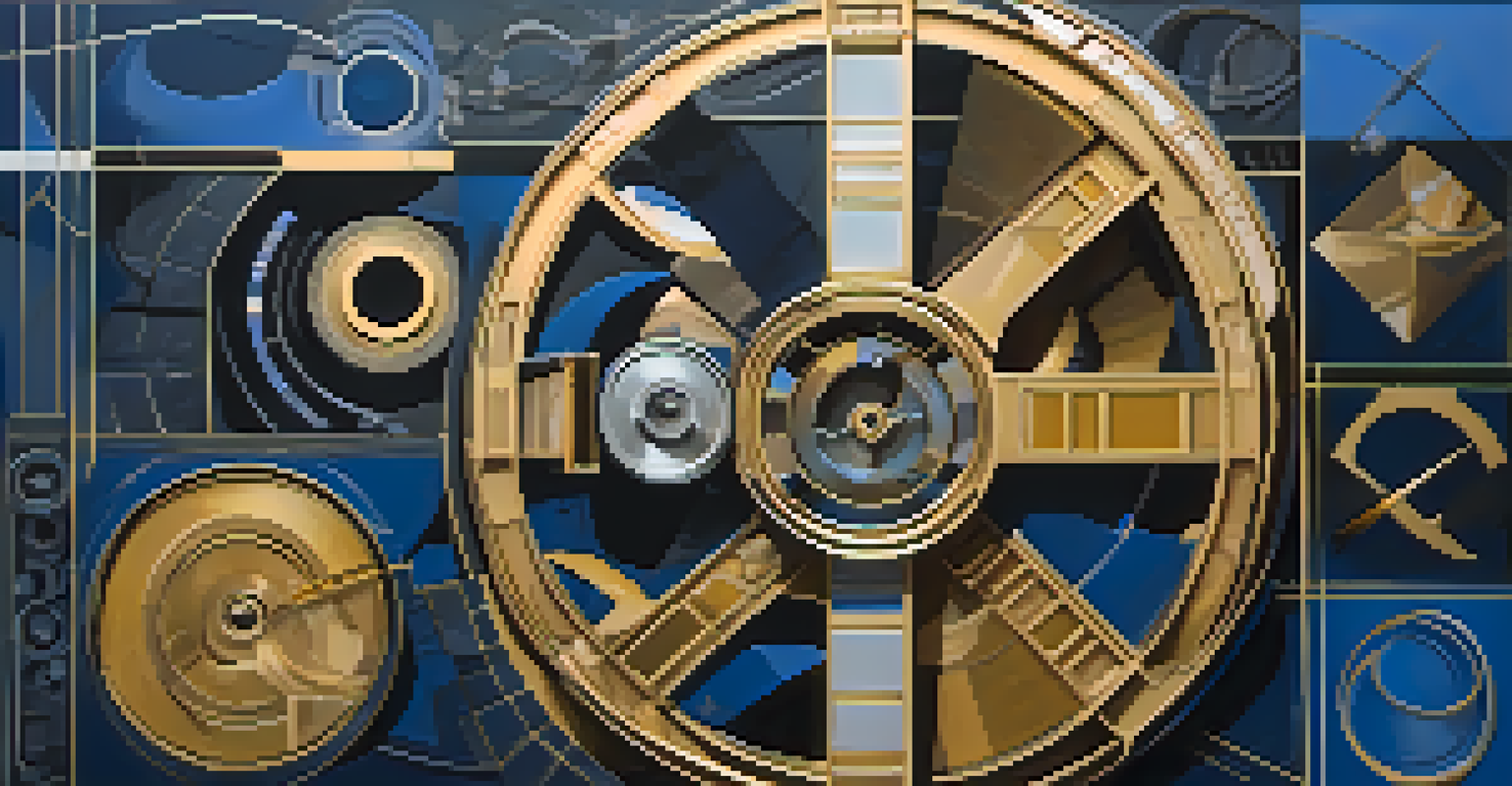The Influence of Film Theory on Modern Film Criticism Practices

Understanding Film Theory: A Foundation for Criticism
Film theory serves as the backbone of film criticism, providing a framework that helps critics analyze and interpret films. By delving into various theoretical perspectives, critics can uncover deeper meanings and cultural contexts within cinematic works. For instance, theories like formalism emphasize the importance of visual elements, while psychoanalytic theory explores the psychological motivations of characters and viewers alike.
Film is a powerful means of communication, and its analysis is a crucial part of understanding our culture.
This foundational knowledge allows critics to engage with films beyond surface-level observations. They can dissect narrative structures, visual styles, and sound design, revealing how these components contribute to the overall impact of a film. Essentially, film theory equips critics with the tools needed to appreciate and articulate the complex layers of a film's artistry.
Moreover, understanding film theory encourages critics to consider the historical and cultural significance of films. It promotes an awareness of how societal norms and values influence filmmaking and reception, ultimately enriching the conversation surrounding cinema.
The Evolution of Film Criticism: A Historical Perspective
Film criticism has evolved dramatically since the early days of cinema, reflecting changes in both the medium and audience expectations. Initially, critics focused primarily on the technical aspects of filmmaking, such as acting and direction. However, as film theory emerged in the mid-20th century, criticism began to incorporate more nuanced analyses that considered thematic and ideological elements.

For example, the introduction of structuralism and post-structuralism in film theory allowed critics to explore how narrative structures shape our understanding of films. This shift not only changed the way films were critiqued but also opened up discussions about representation, identity, and power dynamics in cinema.
Film Theory Enhances Criticism
Understanding film theory equips critics with tools to analyze deeper meanings and cultural contexts in films.
As a result, modern film criticism often intertwines with film theory, creating a rich tapestry of insights that enhance our viewing experience. Critics now have the capacity to examine films through various lenses, allowing for a more comprehensive understanding of their significance in contemporary culture.
Key Film Theories That Influence Modern Criticism
Several key film theories have significantly shaped the landscape of modern film criticism. One notable example is feminist film theory, which critiques the portrayal of women in film and highlights issues of gender representation. This theory has empowered critics to question traditional narratives and advocate for more inclusive storytelling in contemporary cinema.
Criticism is a dialogue between the critic and the audience, which enriches the cinematic experience.
Another influential theory is Marxist film theory, which examines the socio-economic implications of films, often focusing on class struggle and capitalist ideologies. Critics who adopt this perspective analyze how films reflect or challenge societal structures, providing audiences with a critical lens through which to view cultural productions.
Additionally, postcolonial theory has gained traction, encouraging critics to explore the effects of colonialism and cultural imperialism in cinema. By incorporating these diverse theoretical frameworks, modern critics can engage in richer dialogues about the films they analyze, making their critiques more relevant to today’s audiences.
The Role of Digital Media in Film Criticism
The rise of digital media has transformed film criticism, providing new platforms for critics to share their insights with broader audiences. Social media, blogs, and video platforms have democratized film criticism, allowing anyone with an opinion to voice their thoughts on films. This shift has led to a more diverse range of voices in the conversation, enriching the discourse surrounding cinema.
Moreover, digital media allows for immediate reactions and discussions, which can influence the way films are perceived upon release. Critics can share their thoughts in real time, facilitating an ongoing dialogue that extends beyond traditional reviews. This immediacy can shape audience expectations and even impact box office performance.
Digital Media Transforms Critique
The rise of digital platforms has democratized film criticism, allowing diverse voices to engage in real-time discussions.
However, the proliferation of opinions online can also lead to challenges, such as misinformation or overly simplistic critiques. Critics must navigate this landscape thoughtfully, ensuring that their analyses remain grounded in solid film theory and critical practice.
The Impact of Audience Reception on Film Criticism
Audience reception plays a crucial role in shaping film criticism, as critics often consider public opinion and cultural context when analyzing films. Understanding how audiences react to a film can provide valuable insights into its themes and messages. For example, a film that resonates with a particular demographic may reveal underlying societal issues that warrant further exploration.
Critics must balance their perspectives with audience reactions, acknowledging that personal interpretations can differ widely. This dynamic relationship between critic and audience enriches the critical discourse, as both parties contribute to the understanding of a film’s impact and relevance.
Furthermore, audience engagement through platforms like social media can influence how critics frame their analyses. Critics are increasingly aware of trends in audience discussions, and this awareness can guide their critiques, making them more relatable and reflective of contemporary viewing experiences.
Bridging Theory and Practice: A Critic's Approach
Successful film critics often find a balance between theoretical frameworks and practical analysis when evaluating films. By weaving film theory into their critiques, they can offer audiences deeper insights while maintaining accessibility. This approach not only elevates the conversation but also encourages viewers to engage more critically with the films they watch.
For instance, a critic might analyze a blockbuster film through a feminist lens, discussing how it either reinforces or subverts traditional gender roles. This not only informs the audience about the film's content but also encourages them to reflect on broader cultural narratives.
Audience Impact Shapes Analysis
Critics must consider audience reception to enrich their analyses and acknowledge differing interpretations of films.
Ultimately, bridging theory and practice allows critics to foster a richer understanding of cinema's place in society. By employing various theoretical perspectives, critics can illuminate the artistry of filmmaking while challenging viewers to think critically about the messages conveyed on screen.
The Future of Film Criticism in a Changing Landscape
As the landscape of cinema continues to evolve, so too will film criticism. Emerging technologies, changing audience demographics, and the increasing diversity of voices will shape the future of critical discourse. Critics must adapt to these shifts, embracing new forms of storytelling and analysis that resonate with contemporary audiences.
Moreover, as global cinema becomes more accessible, critics will need to broaden their perspectives to incorporate diverse cultural narratives. This shift will enrich film criticism, allowing for a more comprehensive understanding of cinema as a universal art form that reflects the complexities of human experience.

In this ever-changing environment, critics who remain committed to the principles of film theory while being open to new ideas will thrive. By fostering a dialogue that embraces innovation and inclusivity, modern film criticism can continue to evolve, providing valuable insights into the world of cinema.